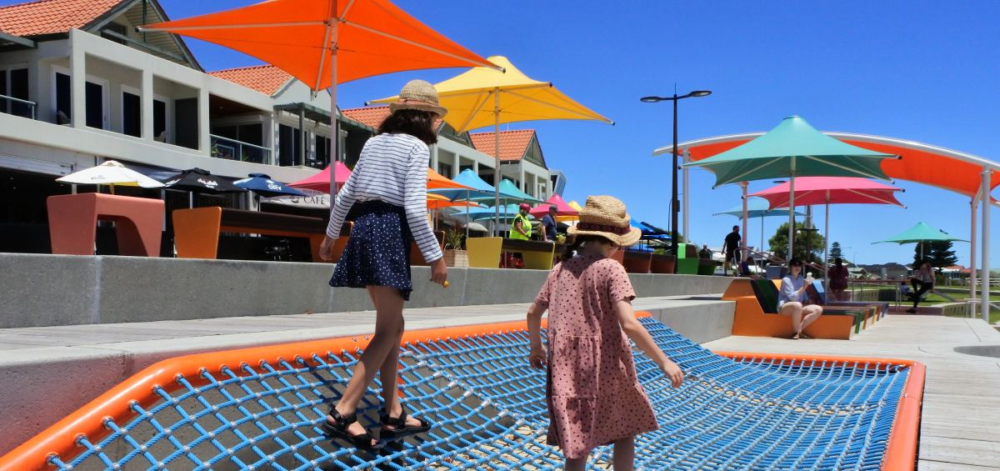Herron Todd White’s (HTW) director, Perron King, said that with interest rates now reaching a peak, potential residential buyers may return to the market with renewed confidence, seeking out property that suits their needs.
“Purchasers are increasingly taking into consideration the position of a property in relation to public transport links, particularly in the larger eastern capital cities of Melbourne, Sydney and Brisbane,” he stated.
Real estate agents have indicated proximity to a metro rail station within a five-to-15-minute walking distance is becoming a popular purchasing factor for home buyers, regardless of whether the suburb is located in the inner or outer areas of a city, according to Mr Perron.
“Rail access not only provides a link to the CBD hub from home but [also] access to other parts of a city, be they major sporting grounds or to friends and family located in other suburbs,” he explained.
For other cities, he highlighted lifestyle factors that influence a person’s buying decision and shift depending on the region they’re in.
“For example, PerthPerth, TAS Perth, WA, being the sunniest capital in the country and blessed with some of the world’s best beaches, some buyers are motivated by the outdoors and being within close proximity to the coast together with desirable amenities of cafes, established schools and shops.
“Suburbs such as beach-fronting ScarboroughScarborough, WA Scarborough, QLD and Mullaloo have transformed over recent years to be highly sought after for their coastal lifestyle,” he said.
Suburbs that have a strong sense of community are also increasingly drawing in buyers, Mr King noted.
“Areas such as Bohemian Fremantle in Western Australia, BrunswickBrunswick, WA Brunswick, VIC in Melbourne and cosmopolitan Marrickville in Sydney are drawcards for purchasers who want to live amongst a like-minded community,” he said.
While Mr King noted home buyers’ budgets will continue to be tight, thanks to borrowing capacity being dented by the interest rate raising cycle that kicked off in May 2022, the latest inflation data may indicate a shift in the RBA’s monetary policy stance is on the horizon.
“The latest data has revealed that inflation has peaked and is finally beginning to soften, with the RBA signalling we may be near the peak of the rate cycle.
“Potential residential purchasers may now return to the market with renewed confidence, seeking out property, be it close to a beach, a train station with city access or indeed with their tribe in their desired suburb,” he explained.
Which markets are rising and declining?
The latest Month in Review from HTW showed the house markets that are at the peak of their property price cycle, including Albany, Alice Springs, Bathurst, Broome, Canberra, Darwin, Dubbo, Mildura, Mount Gambier, Newcastle, Shepparton, South-West Western Australia, Tamworth and Toowoomba.
Rising house markets include Emerald, Esperance, Karratha, Rockhampton, the Southern Tablelands, Townsville and Whitsunday, while house markets approaching their peak included Bundaberg, Cairns, Fraser Coast, Geraldton, Gladstone, Kalgoorlie, Mackay, Perth and Port Hedland.
Adelaide, Adelaide Hills, Albury, Barossa Valley, Burnie/Devonport, Central Coast, Gold Coast, Launceston, Melbourne, Shepparton, SunshineSunshine, NSW Sunshine, VIC Coast and Wodonga were named as house markets that were starting to decline.
Declining house markets, or areas where house prices are already falling, included Ballina/Byron Bay, Brisbane, Coffs Harbour Geelong, Hobart, Ipswich, and LismoreLismore, NSW Lismore, VIC.
Illawarra, Southern Highlands and Sydney were the areas identified to be where house prices are approaching the bottom of the market.
For the unit sector, markets identified to be at their peak included Albany, Alice Springs, Bathurst, Brisbane, Burnie/Devonport, Mildura, Mount Gambier, Newcastle, Shepparton, South-West Western Australia, Tamworth and Toowoomba.
Unit markets starting to decline included Adelaide, Adelaide Hills, Albury, Barossa Valley, Central Coast, Gold Coast, Ipswich, Launceston, Melbourne, Sunshine Coast and Wodonga while markets where prices are already falling included Ballina/Byron Bay, Canberra, Coffs Harbour, Geelong, Hobart, Illawarra, and Lismore.
Rising unit markets included Cairns, Darwin, Dubbo, Emerald, Esperance, Geraldton, Karratha, Rockhampton, Townsville and Whitsunday while unit markets approaching their peak included Broome, Bundaberg, Fraser Coast, Gladstone, Kalgoorlie, Mackay, Perth and Port Hedland.
Southern Tablelands was the only unit market categorised under “start of recovery”.



